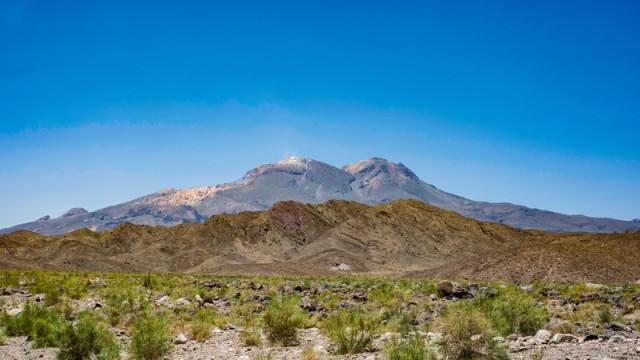Tehran, Oct 20 (V7N) — A volcano in southern Iran, long thought to be extinct for around 7,10,000 years, has shown surprising signs of renewed activity, sparking both scientific curiosity and concern.
A study published on October 7 in the journal Geophysical Research Letters revealed that between July 2023 and May 2024, a section of land near the summit of Mount Taftan rose by approximately 3.5 inches (9 centimeters). This uplift has not subsided, suggesting a buildup of gas pressure beneath the surface.
According to volcanologist Pablo González from the Institute of Natural Products and Agrobiology (IPNA-CSIC) of the Spanish National Research Council, the findings highlight the need for close monitoring. “The volcano was not previously considered hazardous to humans, but this new activity indicates it should be closely observed,” González said.
Scientists classify a volcano as extinct if it has not erupted since the beginning of the Holocene epoch, about 11,700 years ago. Based on the recent geological movements, González noted that Taftan should now be considered dormant rather than extinct.
“It’s difficult to predict how it might release this energy — it could happen violently or in a much quieter way,” González told Live Science. He added that while there is no immediate threat of an eruption, increased surveillance is necessary.
Mount Taftan, a stratovolcano rising 12,927 feet above sea level, is located in southeastern Iran. It was formed due to the subduction of the Arabian tectonic plate beneath the Eurasian continent. The mountain hosts an active hydrothermal system with sulfur-emitting fumaroles but has no known record of eruptions in human history.
Mohammad Hossein Mohammadnia, a doctoral student who first analyzed satellite images of the volcano in 2020 under González’s supervision, initially found no signs of unusual activity. However, in 2023, locals began reporting gas emissions visible from the volcano, with a strong odor detected as far as 50 kilometers away in the city of Khash.
Mohammadnia later used data from the European Space Agency’s Sentinel-1 satellite, which continuously monitors the Earth’s surface. The images showed measurable ground deformation near the summit, pointing to increased subsurface pressure.
According to his calculations, the source of this uplift lies between 1,600 and 2,000 feet below the surface. While the exact cause remains uncertain, researchers have ruled out external factors such as earthquakes or rainfall. They believe the uplift could be due to changes in the hydrothermal plumbing beneath the volcano, indicating gas accumulation — or possibly a small movement of magma causing pressure to build within the rock layers.
“This study is not meant to alarm people,” González explained. “It serves as a scientific warning to local authorities to begin detailed monitoring and research on this potentially reawakening volcano.”
Mount Taftan’s unexpected stirrings have transformed it from a geological relic into a site of renewed scientific interest, reminding the world that even the most ancient volcanoes can show signs of life after hundreds of thousands of years.
END/WD/SMA/































Comment: